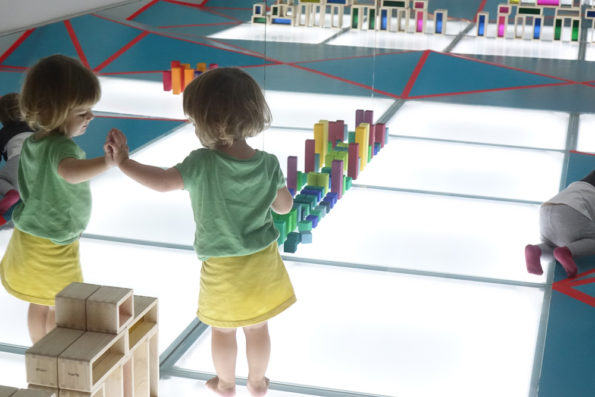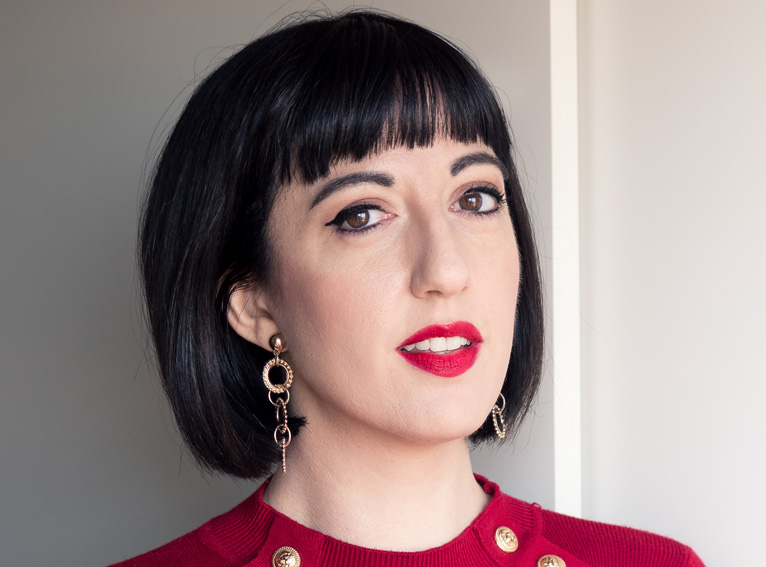Search
To search for an exact match, type the word or phrase you want in quotation marks.
A*DESK has been offering since 2002 contents about criticism and contemporary art. A*DESK has become consolidated thanks to all those who have believed in the project, all those who have followed us, debating, participating and collaborating. Many people have collaborated with A*DESK, and continue to do so. Their efforts, knowledge and belief in the project are what make it grow internationally. At A*DESK we have also generated work for over one hundred professionals in culture, from small collaborations with reviews and classes, to more prolonged and intense collaborations.
At A*DESK we believe in the need for free and universal access to culture and knowledge. We want to carry on being independent, remaining open to more ideas and opinions. If you believe in A*DESK, we need your backing to be able to continue. You can now participate in the project by supporting it. You can choose how much you want to contribute to the project.
You can decide how much you want to bring to the project.

A double tension sustains the allegory of ruin in contemporary art: on the one hand, the historical revisionism present in many projects that reference both the collective and personal memory of the artist and, on the other hand, the forceful criticism of works created from vestiges of a grotesquely consumerist model of life in the present.
A certain melancholic nostalgia of Walter Benjamin fostered a way of thinking of ruins as an emptying out, much like the catastrophe that the passage of history leaves in its unstoppable march towards the future. Our position is somewhat more optimistic, for from the ruin emerges artistic creation with a social conscience, one that favors the appearance or recovery of logistical and institutional structures that produce and exhibit art aimed at a receptive society.
Do art centers with planned obsolescence exist? Is it possible to generate a discourse from the remains of a neglected museum? In these times, we are seeing the imminent closure of museums due to economic consequences derived from the health crisis. Mobility restrictions during the pandemic have revealed a global weakness, namely, just how many different aspects related to the cultural sphere depended on tourism. Performances and exhibitions without a sufficient audience to justify their expenses, without box office returns, without generating economic benefits are therefore understood as not very profitable in a society of exacerbated consumption pushed to the limit. This panorama has put to the test the capacity for reaction and inventiveness in search of new models to apply to each institution, in such a way that it becomes clear which institutions have reached the end of their road and which ones can reinvent themselves and prove their resilience.
At the beginning of 2021, news broke of the possible closure of the Centro de Arte y Naturaleza (Center for Art and Nature) in Huesca, headquarters of the Beulas Foundation that contains the Beulas-Sarrate collection and which has a library-like documentation center focused on Land Art. Inaugurated in 2006 and directed since 2016 by Juan Guardiola Román, the project has a Board of Trustees, comprised of the Government of Aragon, the Provincial Council of Huesca, the City Council of the capital of Huesca and representatives of the Beulas family, which promoted the creation of this center when this art collection was bequeathed to the city. The center´s director has been dismissed and the museum space will now be administered by the Museum of Huesca with the goal of reorienting its activity and to try to reverse the decrease in museum-goers.
Much art criticism has been written about the relationship between mass tourism and iconic museums, large containers of which neither their contents nor the continuity of their goals are assured. In this sense, it is worth asking if we are facing a paradigm shift in terms of re-signifying cultural spaces. The pandemic has left us images of fairgrounds, churches and sports centers converted into makeshift hospitals. IFEMA hosted the ARCO contemporary art fair in its 2020 edition a few weeks before panic broke out, and during the first global confinement the exhibition pavilions were for a brief time converted into a field hospital.
The debate on the sustainability of large cultural containers goes way back and there are many examples of conversion opportunities before the spread of the Corona virus. La Laboral in Gijón, which is considered the largest building in Spain, was conceived as a university, later housed an orphanage and eventually became a cultural center with difficult access but with a very exciting program. Its maintenance has been difficult and it has expanded and contracted over the years in an erratic way, probably due to lack of resources. It goes without saying that, due to an excessive investment at an unsustainable rate, La Conservera, a space located in Ceutí, a small municipality in the Region of Murcia, which was intended as a meeting point for international creation, has been paralyzed for some time.
On the other hand, we have cases in which new, coherent and sustainable projects have been built within an exhausted cultural complex or museum practically in ruins. Ten years ago, La Cidade da Cultura in Santiago de Compostela was considered a disproportionately large project, in tune with the megalomaniacal frenzy of the “City of Languages” of Castellón whose realization was finally suspended. However, in recent years, cultural activity in Galicia has been successfully revitalized, largely due to the contribution of Paula Cabaleiro, current director of Culture in the Pontevedra government. Able to establish connections that structure territory, Cabaleiro had already worked as curator of the Xardín Literario de La Cidade, within the framework of the Xacobeo program. Not in vain, the main focus of her programs is to promote Galician cultural resources, create original exhibitions, give visibility to intangible heritage and support artistic production.
At the beginning of April 2016, José Luis Pérez Pont was appointed managing director of the Consorci de Museus de la Comunitat Valenciana, an institution comprised of the Generalitat, the three Provincial Councils and the three Municipalities of Valencia, Alicante and Castellón, by means of a public tender. Since then, he also became the director of the Centre del Carme, a museum whose management had previously generated much controversy after uncovering cases of artists who were not paid to exhibit there at the same time as curators, mostly linked to the academic field, were paid and were selected without clear or transparent criteria. In addition, several parts of the building had become quite deteriorated and garbage accumulated to such a point that the local press raised an alarm due to a flea infestation inside. Staging a comeback from this situation was a challenge for any professional as it required a radical shift.
Pérez Pont’s project has been a shift, and not only has he maintained it over time but he has been able to gracefully adapt it to an unprecedented situation, investing in its present in order to build its future. When the pandemic began, from minute one of the lock-down, he created and promoted more than eighty specific projects in record time to keep the programming active, despite the fact that the museum had to be closed, hybridizing physical and virtual activities. Above all, he was to be able to hire artists, researchers and curators through open-calls with financial support that helped stimulate the cultural sector during periods of great uncertainty.
Reconverted into the most-visited cultural center in the entire Valencian region and with a very low percentage of tourist visitors, the Consorci´s main site, now called Centre del Carme Cultura Contemporània, has established itself as a secure, plural and inclusive space thanks to the “Pérez Pont formula.” This center cultivates new audiences and is a pioneer in incorporating into the museum educational proposals for infants with early stimulation, stories, film cycles, and other activities. Its loyalty lies with its local family public, and it has changed its infrastructure to be more accessible and has committed itself to raising awareness about climate change through various activities. In its programs it gives voice to silenced groups, hosting the HIVsibles and Mostra la Ploma festivals, among others. The center fights sexist violence and promotes artistic activities in educational communities, with online open-calls for research, production and cultural residencies. The success of such a model expanded and adapted to the new reality is proof that there is a future for ruins.
(Featured Image: Espai de telles del CCCC. Photo: Juan Peiró)

Marisol Salanova (1982) is an art critic and exhibition curator. With a degree in Philosophy, her research links body, technology and memory. She specialized in Art and Technology through the Master in Artistic Production at the Universitat Politècnica de València (UPV) and has taught workshops, courses and seminars at the universities of Oxford, Brighton (England) and Berkeley, California (USA). He writes regularly for ABC Cultural, Revista Mirall and El Matí de Catalunya. She coordinates independent exhibition projects, always from a feminist perspective. She also advises public and private collections.
"A desk is a dangerous place from which to watch the world" (John Le Carré)